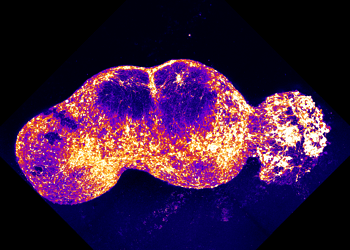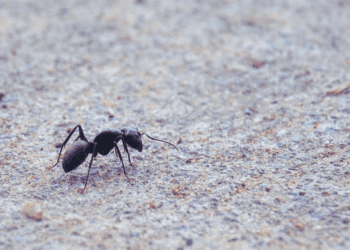In a windowless room inside a London hospital, a newborn winces as a heel is pricked for a routine blood test. The response is immediate. The child flinches, grimaces. The face contorts, just like an adult’s might. But what is actually happening inside the baby’s brain?
A sweeping new study from University College London set out to find out how babies process pain. By analyzing brain scans from more than 370 infants—some born extremely prematurely and others full-term—scientists have mapped the development of the brain’s “pain connectome,” the network of regions that together generate the experience of pain.
The results are both sobering and revelatory: premature babies can feel pain well before they can understand or interpret it.

A Sensory Alarm Without a Message
In adults, pain is more than a jolt. It’s often a signal that triggers thoughts, emotions, and reflexes. That’s thanks to a trio of interconnected brain networks. One handles the physical sensation. Another governs emotional response. A third evaluates the context.
“Pain is a complex experience with physical, emotional, and cognitive elements,” Professor Lorenzo Fabrizi, the study’s senior author, told Cosmos. “In adults, pain processing relies on a functional network of brain regions called the ‘pain connectome,’ with different regions working together to help us experience pain, each part responsible for different aspects of it.”
But in newborns, that network is only partially online.
Using MRI scans from the Developing Human Connectome Project and the Human Connectome Project, the team analyzed resting brain activity in infants between 26 and 42 weeks postmenstrual age, spanning those still in the womb through to full-term babies less than two weeks old.
They found that the first pain-processing network to mature is the sensory-discriminative network, responsible for detecting and localizing pain. This network becomes functional around 34 to 36 weeks after conception.
In plain terms, even very premature babies can feel pain. Their brains register it. But they don’t yet have the internal wiring to understand what’s happening or how to emotionally or cognitively respond.
When Emotion and Meaning Catch Up
The second layer, the affective-motivational network, comes online a bit later, around 36 to 38 weeks. This system imbues pain with emotion, making it feel unpleasant or distressing.
Only after birth, around or beyond 42 weeks, does the final network begin to mature: the cognitive-evaluative network. This network helps a person interpret pain, assign meaning, anticipate outcomes, and perhaps even form memories.
“Preterm babies may be particularly vulnerable to painful medical procedures during critical stages of brain development,” warns Fabrizi. They may feel the pain physically, but lack the emotional or cognitive framework to process or cope with it.
This disconnect may also explain previous findings from the same group: premature infants do not show a reduction in pain response when exposed to repeated painful procedures. Adults, and older children, typically do—once the brain recognizes a pain is predictable, it modulates its response. But for infants, whose higher-order pain networks are still under construction, the pain remains just as raw, each time.
A New Blueprint for Neonatal Pain Care
The new study maps the trajectory of this pain connectome with rare clarity. The sensory regions, like the thalamus and somatosensory cortex, reach adult-like connectivity earliest. Emotional centers like the amygdala and anterior cingulate cortex follow. The last to mature are the prefrontal cortex hubs that help adults evaluate and contextualize discomfort.
By comparing babies to 98 healthy adults, the researchers identified which connections were still forming. In infants at full-term age (40–42 weeks), the sensory network was even more connected than in adults—a kind of developmental overgrowth. But the emotional and cognitive networks still lagged behind. Some connections involving the prefrontal cortex were missing or weaker than those in adults.
This matters. Pain isn’t just a fleeting signal; it can shape long-term brain development. Earlier studies have shown that repeated pain in preterm infants can alter how their thalamus (a central relay station in the brain) develops. That, in turn, can affect behavior and sensory processing years later.
A Call for Rethinking Pain in the NICU
Caregivers often rely on behavioral cues, like crying or grimacing, to gauge an infant’s pain. But those cues don’t reveal what the brain is doing beneath the surface. This study suggests that even silent infants may be undergoing significant neural stress when exposed to pain.
Crucially, the researchers note that infants can form implicit memories of early painful experiences even if they cannot consciously recall them. “Unconscious sensory registration can still initiate autonomic and behavioral survival responses and may still have long-term consequences,” the authors write. Pain, for newborns is a developmental force, one that can leave traces before memory begins.
But why don’t we remember?
The brain’s ability to form and store autobiographical memories relies on a network that includes many of the same regions involved in evaluating pain. If those regions are still maturing during and after birth, it’s no wonder early memories—including of pain—don’t stick in the traditional sense.
Yet, those early experiences can still shape the brain’s wiring, influencing how we respond to pain or stress years later.

The study raises new questions. Can we accelerate the maturation of pain-processing networks through comfort care? Do different types of pain—needles versus inflammation—shape the brain in different ways? And how can neonatal care be adapted to protect the most fragile patients?
Future research may delve deeper into the “how” of pain, but this study has already shifted the “when.”
The findings were published in the journal PAIN.






